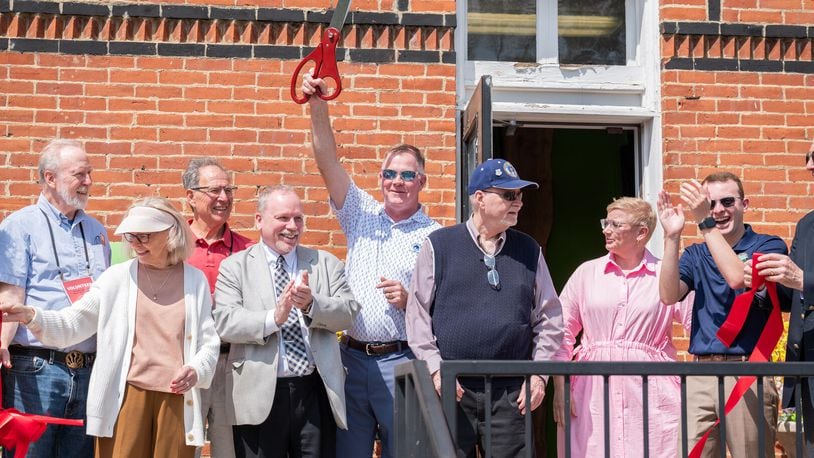The event, which was held on April 27, included museum tours, children’s activities, face painting, storytelling, food, and visits at the orchard of Johnny Appleseed saplings and the children’s garden. The museum held a soft opening last November.
The museum closed three-and-a-half years ago in March 2020 when Franklin University closed Urbana University, a branch campus, because of the impact of the coronavirus pandemic. Franklin University sold the 143-year-old Browne Hall building, home of the museum and educational center since 2018, to the Johnny Appleseed Foundation in June 2020.
Since that time, museum officials raised funds for the purchase of the building to house the museum, re-inventoried the total collection, and developed and implemented the redesign.
“With the closure of our affiliate, Urbana University, the museum was left with the monumental task of becoming an independent entity. Our foundation engaged the design talents of the local company Exhibit Concepts Inc. out of Vandalia, to bring to life a museum that was modern yet timeless and fun for all ages while keeping true to our mission,” Prescott said.
The building houses a museum that preserves the history of the pioneering orchardist John Chapman, also known as Johnny Appleseed.
Chapman was an entrepreneur and a missionary, and his apple tree saplings and nurseries had a positive impact on settlers in Ohio, parts of Pennsylvania into Indiana as he pushed for further settlement. Cider produced from Chapman’s apples was also used as a reliable, sanitary drinking source, as water was often unsanitary at the time, foundation officials previously said.
Chapman also had personal ties to the area. He personally knew John James, of Urbana, a lawyer and banker who donated the land for Urbana College, later Urbana University, according to the foundation.
The museum is located at 518 College Way in the former Browne Hall on the former Urbana University campus. It’s free to the public, and operations are funded on individual donations and fundraising.
The center and museum is open from 10 a.m. to 4 p.m. on Tuesday, Wednesday and Thursday, with group tours by appointment. Those interested in a tour can call ahead to schedule a visit during off-hours.
If interested in volunteering or for more information, contact director@johnnyappleseedmuseum.org or visit the website at www.johnnyappleseedmuseum.org.
About the Author
